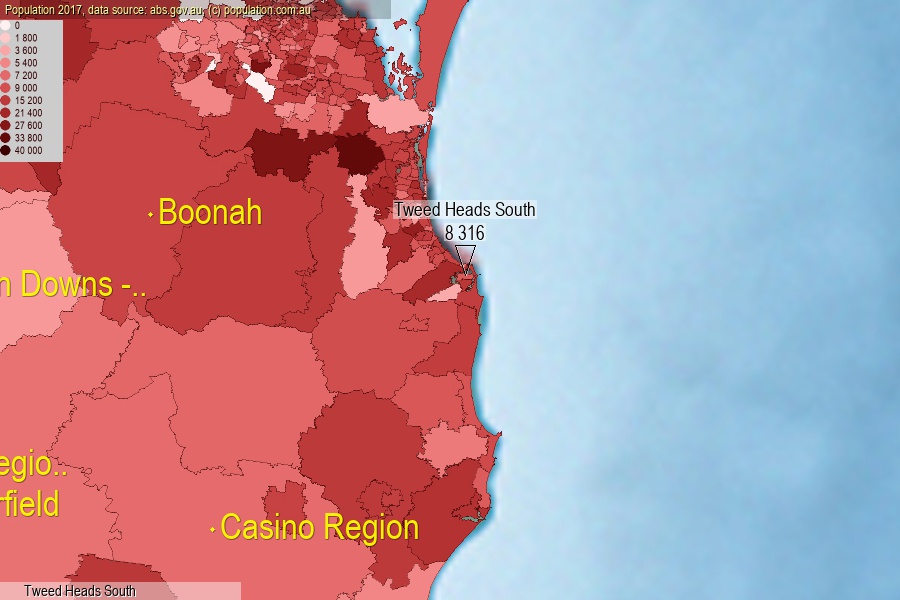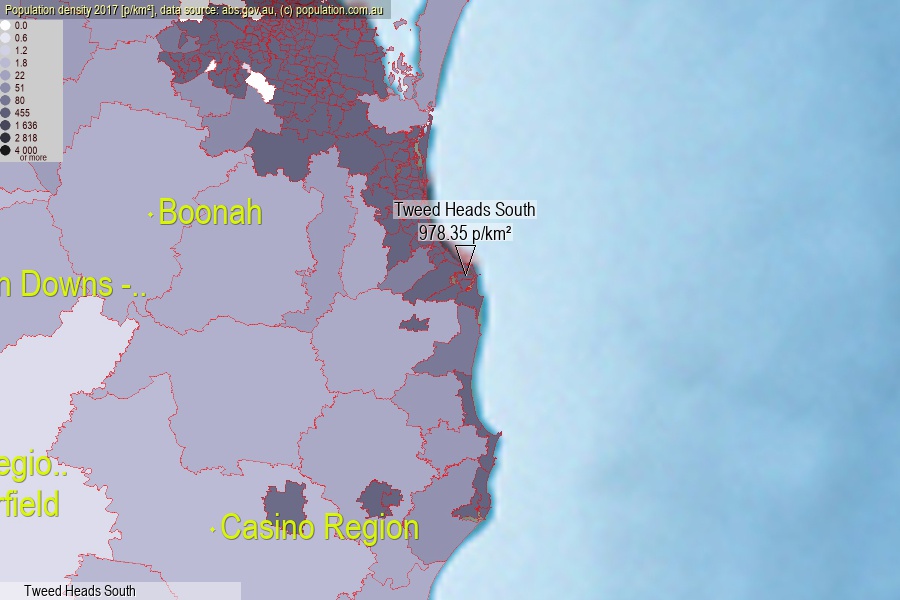 population.com.au
population.com.auLast official estimated population of Tweed Heads South (as Statistical Area Level 2) was 8 316 people (on 2017-06-30)[2]. This was 0.03% of total Australian population and 0.105% of NSW population. Area of Tweed Heads South is 8.50 km², in this year population density was 978.35 p/km² . If population growth rate would be same as in period 2016-2017 (+0.17%/yr), Tweed Heads South population in 2025 would be 8 429. [0]



Click to enlarge. Tweed Heads South is located in the center of the images.
Population [people], population density [p./km²] and population change [%/year] [2]
View borders » (new window) [4]
[2001-2002] +7.49 %/Yr.
[2002-2003] +11.49 %/Yr.
[2003-2004] +4.61 %/Yr.
[2004-2005] -0.08 %/Yr.
[2005-2006] +1.11 %/Yr.
[2006-2007] +1.07 %/Yr.
[2007-2008] +2.92 %/Yr.
[2008-2009] +1.22 %/Yr.
[2009-2010] +1.31 %/Yr.
[2010-2011] +1.46 %/Yr.
[2011-2012] +0.18 %/Yr.
[2012-2013] +0.16 %/Yr.
[2013-2014] +0.23 %/Yr.
[2014-2015] +0.15 %/Yr.
[2015-2016] +0.34 %/Yr.
[2016-2017] +0.17 %/Yr.
[0] Calculated with linear interpolation from officially estimated population
[1] Read more about SA2 and Australian Statistical Geography Standard (ASGS) on abs.gov.au
[2] Population data from Australian Bureau of Statistics (Population and density: 2017; change: 2016-2017)
[3] Digital Boundaries: Australian Statistical Geography Standard (ASGS) 2016.
[4] Border coordinates are simplifyed using Ramer-Douglas-Peucker algorithm.